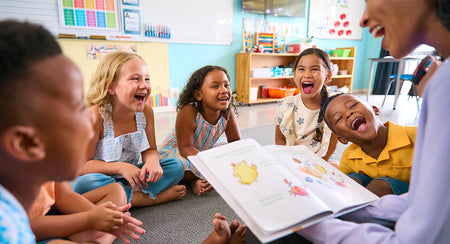Who Says We Can’t Increase Student Attention Spans?
Most of us probably agree that today’s students have shorter attention spans than students did in the past. The research on whether this is true is mixed. However, one thing is certain: students are more distracted today than their predecessors. Their brains also face greater competition for attention than students in previous generations.
Yet, our ability to teach students and their ability to learn and remember are heavily dependent on their being able to focus and absorb information. To be clear, when we refer to attention span, we mean the amount of time we can maintain our focus or awareness toward a given stimulus such as a person, an object, a task, or an idea. However, as simple as this definition sounds, there is more involved than persistent attention. The environment within which we are attempting to focus matters. The more distractions, the more difficult it is to pay attention.
Some students come to us with strong attention skills. Other students do not. However, the ability to focus and maintain attention are learnable skills. With instruction, support, and coaching we can help students to become better at focusing and sustaining attention. Meanwhile, we can create conditions that make giving attention easier. The combination of these two approaches can make a significant difference in the length and strength of our students’ attention spans. Here are eight strategies we can employ to provide support and help students to build their capacity to focus.
Coach students to avoid multi-tasking. The ubiquitous presence of technology makes resisting multi-tasking even more difficult for today’s students. Yet, multi-tasking—or task switching as a more apt descriptor—is a major culprit in reducing attention spans. Having multiple screens open and maintaining a virtual conversation with friends while completing homework, for example, is a recipe for poor performance. Students’ ability to maintain focus is heavily dependent on doing one thing at a time.
Reduce the number, variety, and strength of distractions. The array of potential distractions competing for the attention of students is wide. The presence of cellphones, smart watches, and other technology are obvious sources of distraction. However, excessive wall decorations and clutter in the classroom can create competition for students’ attention. Background noise, lighting, and other environmental elements can add to the challenge of focusing and maintaining attention.
Limit cognitive overload. Cognitive overload occurs when students attempt or are asked to take in and make sense of more information than their brains can handle. When students’ brains become overloaded, they are likely to miss important information, become confused, and fail to recall what they learn. We can help students to increase their attention and stay focused by making our directions simple, brief, and concise. We also might break larger, more complex tasks into small, manageable segments and have students focus on the work in sequence rather than tackling everything at once.
Build in brain breaks. Breaks during learning offer more benefits than we might think. Beyond giving students an opportunity to stand and stretch, breaks can refresh and reenergize the brain’s capacity to focus. Breaks also support the brain to develop mental clarity. Interestingly, the brain often continues to work on its own to organize and make sense of what students are learning during short breaks. A brief stand-up break and accompanying stretch can make a big difference to maintaining focus and expanding attention spans.
Set specific goals and build attention persistence. The presence of goals that students find meaningful can create energy and build persistence to build their attending capacity. Strategies such as the Pomodoro technique, in which students focus for a predetermined amount of time and then take a break, build focusing “muscle” while creating a sense of urgency and purpose. Over time, students can increase the length of time they practice focusing and vary the topics, objects, and ideas on which they focus.
Design attention-supporting activities. Our brains are naturally inclined to respond to certain stimuli. Stories are natural attention attractors. Throughout most of history, stories were a primary source of learning. Physical movement connected to learning, such as gallery walks and role playing can be effective attention sustainers. For some students, soft music and even the sound of a metronome can help them to sustain focus. However, it is best to check with students or try music and rhythm with them before making it a regular practice.
Employ multi-coding. We can assist students to accelerate their learning by employing more than one input strategy to support concepts and content. For example, students might listen to a mini lesson, draw representations of what they are learning, explain their understanding to another student, or physically act out an interpretation of what they are learning. Not only does multi-coding help students to expand their attention spans, they also are likely to understand and remember more of what they learn.
Build in purpose and utility. Students are more likely to remain focused when they see a reason for or value in what they are learning. The presence of a reason to pay attention can be a strong motivator and sustainer of focus. Similarly, when students are learning something that will empower or enable them to do something with what they learn, attention is much easier to sustain. Giving students choices in their learning also can help to sustain and expand attention as students are more likely to commit and persist with activities they have chosen.
Learning does not happen unless students pay attention. Sometimes we need to manipulate and manage the environment to make it easier for students to do so. At other times we need to teach and coach students to build and strengthen their ability to remain focused. Regardless, our success and the success of our students depend on the choices we make and the actions we take to ensure, build, and sustain their attention.















